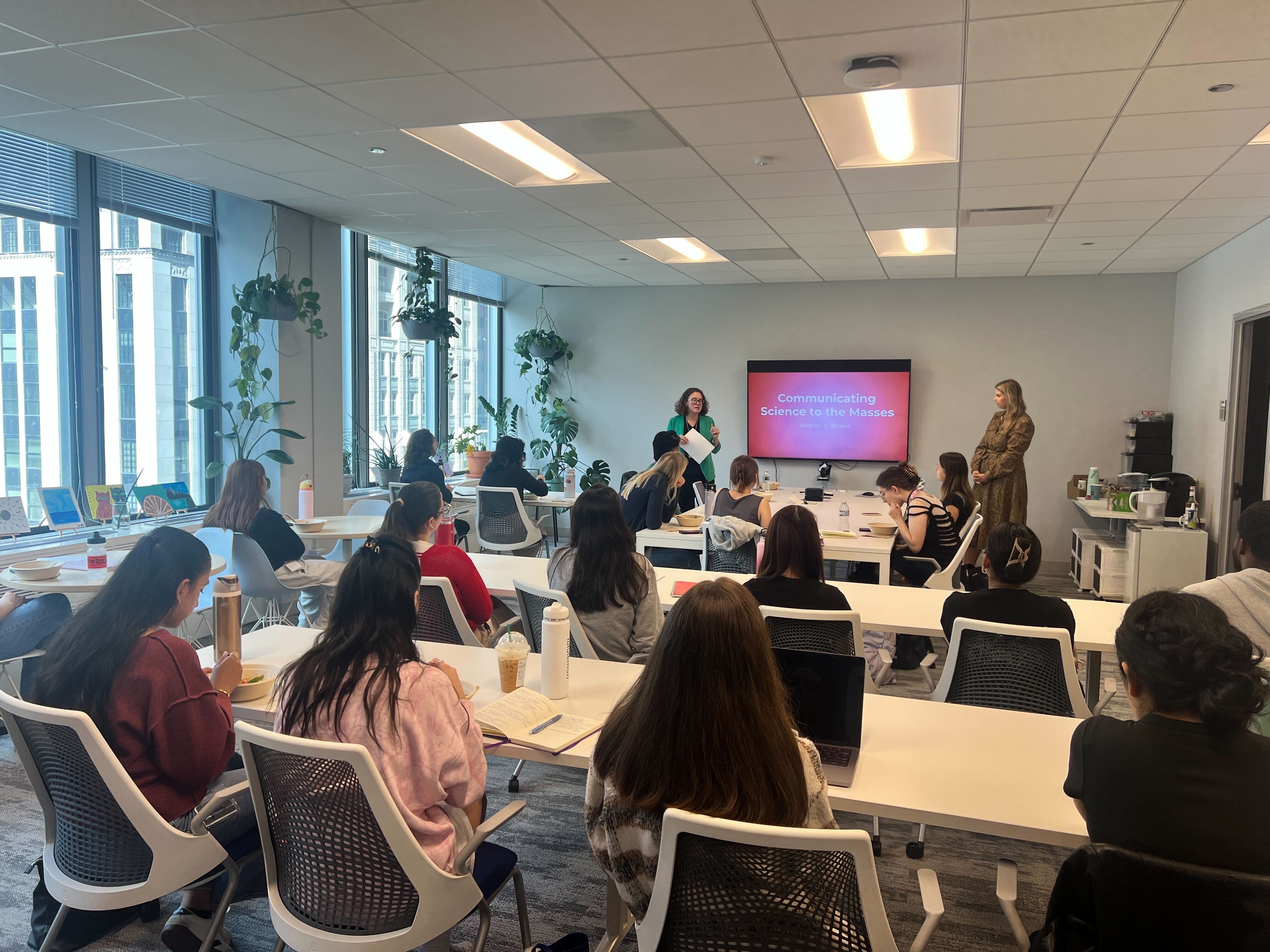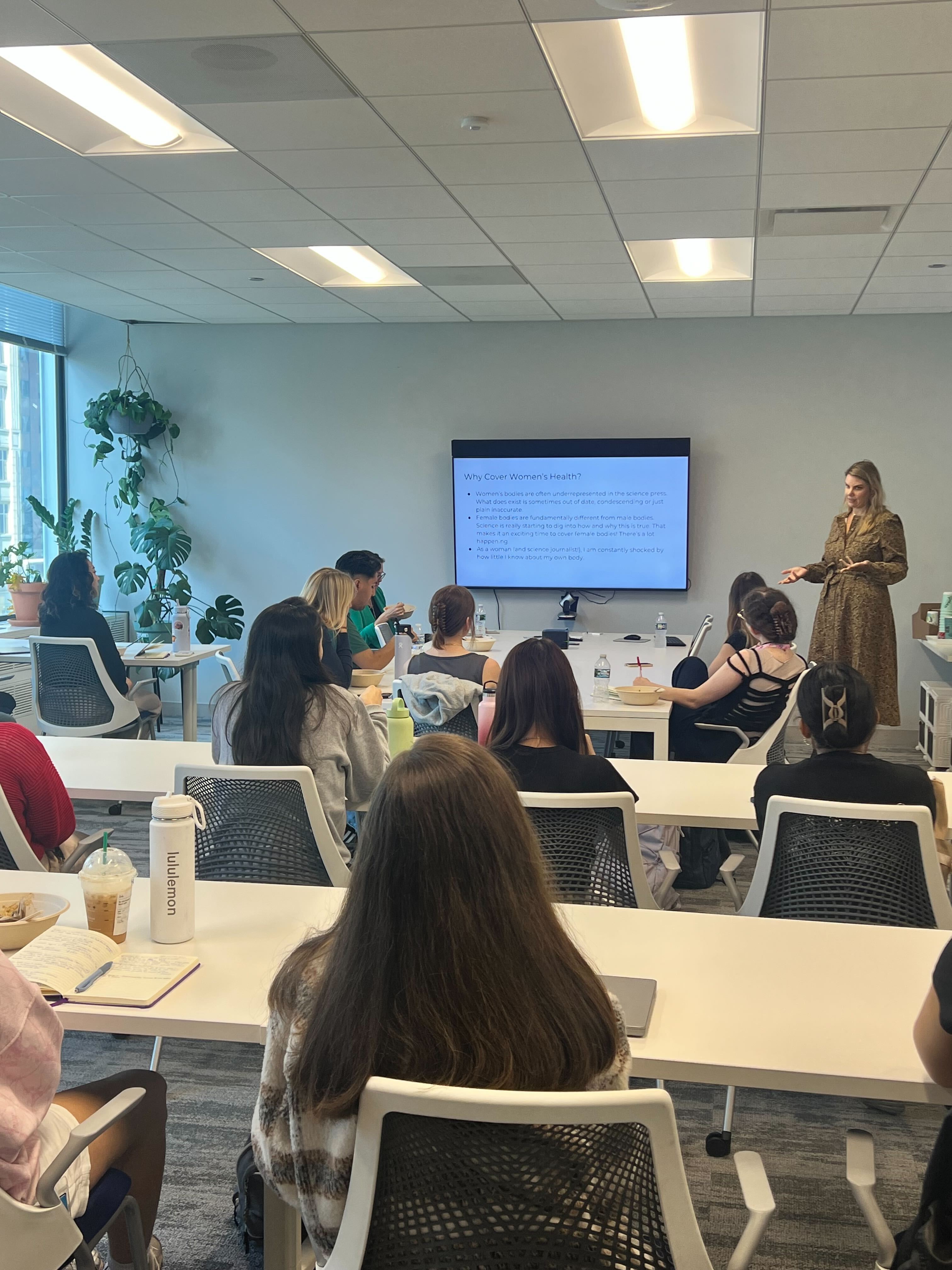Communicating Science to the Masses with Kristen V. Brown
Kristen V. Brown, an award-winning health and science journalist, has built her career exploring how science and technology shape our bodies and lives. Her work spans from consumer DNA testing and DIY gene hacking to pandemic reporting and her own fertility journey. She is the creator of Doubt, a 2021 Bloomberg podcast that won a Signal Award for its exploration of vaccine hesitancy in America, and is now working on her first book, The Immortal Womb: The centuries-long scientific quest to control the female body, and hack human reproduction, expected in 2027. 
At a recent CRS event, we had the privilege of hearing from Kristen V. Brown, who joined us for a talk entitled ‘Communicating Science to the Masses.’ In this engaging session, she reflected on her career journey, the craft of translating science for the public, and the vital role that collaboration between scientists and journalists plays in shaping public understanding. The CRS community had the chance to engage in an open and thoughtful discussion with her, making the conversation not only insightful but also a truly special moment of exchange.
From Breaking News to Biotechnology
Brown began her career chasing breaking news in New York City before moving to San Francisco amid the second tech boom. There, she grew fascinated with the ways technology was quietly reshaping daily life, an interest that eventually led her to cover the world of “biohackers,” people experimenting with DIY biology, from genome editing to unconventional approaches to altering their own bodies. That curiosity evolved into a central theme of her career: how science and technology intersect with the human body. Her reporting has taken her from fertility clinics to genetic testing labs to the front lines of vaccine misinformation. “I write about the surprising ways that new science and technology are transforming our bodies and lives,” she explained, a phrase that captures the thread uniting her work.
Women’s Health and Scientific Blind Spots
Brown noted that her focus often circles back to women’s health, in part because she realized how little is commonly taught or understood about female biology. Confronting the reality of ovarian aging, she began to see firsthand how medicine and science still leave women’s bodies underrepresented. “Female bodies are fundamentally different from male bodies,” Brown emphasized, pointing out that even diseases like dementia manifest differently depending on sex. Yet she observed that coverage of these differences, both in research and in journalism, often falls behind.
The Scientist–Journalist Collaboration
A central point of Brown’s talk was the importance of partnerships between scientists and journalists. Good science reporting, she argued, simply isn’t possible without scientists taking time to explain their work in clear, accessible terms. “My job is literally not possible without the kindness of scientists,” she said. “I interpret what you do for a mass audience, but I can’t do that without first understanding it.” She encouraged researchers to reach out proactively, not only to share their work but also to correct misrepresentations. “Every reporter’s dream,” she added, “is for a scientist to cold-call them with a story idea.” 
Communicating Amid Misinformation
Brown also addressed the rise of misinformation in an era dominated by TikTok, Instagram, and other platforms where false claims can spread faster than fact-checks. She argued that empathy is key: dismissing people’s experiences or beliefs only deepens distrust. At the same time, she urged scientists and journalists to meet audiences where they are. “That’s where misinformation spreads,” she said, “and often nobody is there with the facts to counter it.”
The Takeaway
For Brown, science communication is about more than just facts; it’s about trust, clarity, and human connection. Whether covering COVID-19, decoding the promises and pitfalls of DNA testing, or investigating the future of reproductive technology, her reporting aims to make complex science feel both understandable and relevant. Her message to scientists was clear: don’t underestimate the value of your voice beyond the lab. By building relationships with reporters and embracing accessible language, researchers can help ensure discoveries move out of journals and into the conversations that shape public life.